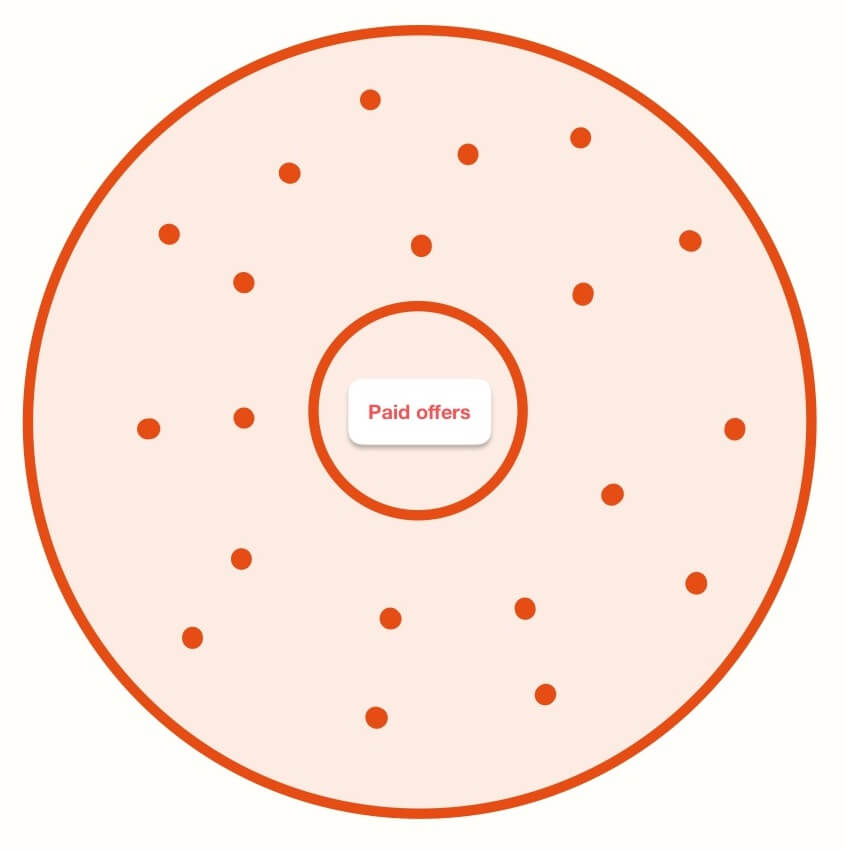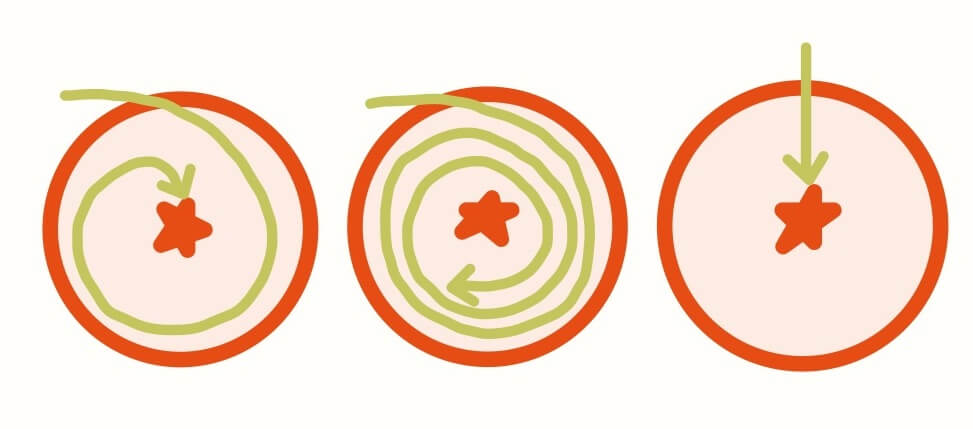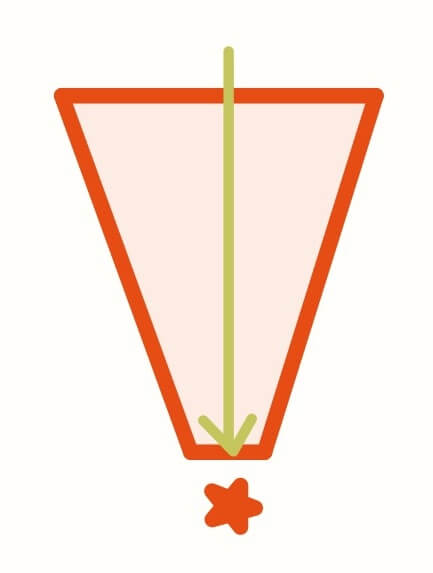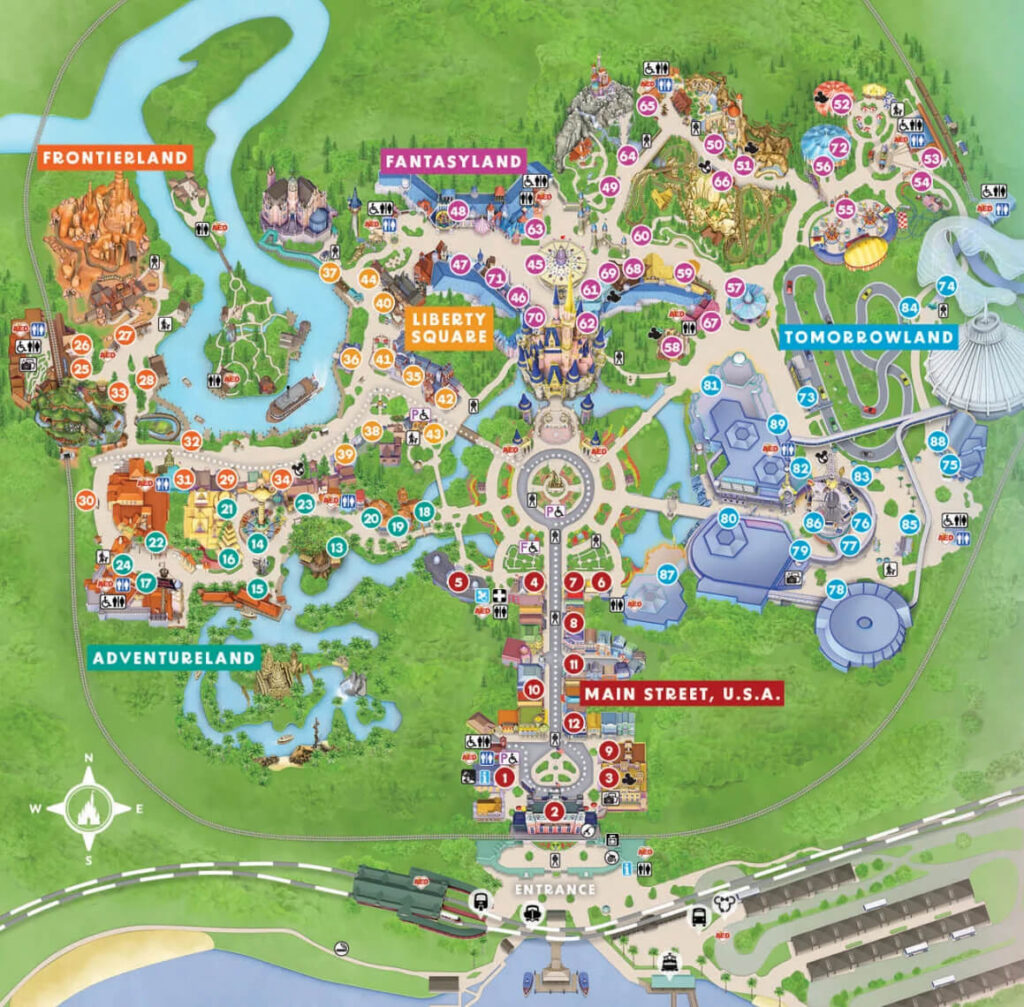This is installment 3 in my series about Brand Worlds. In this post I want to help you get familiar with the non-linear customer journey of a brand world.
In the last installment of this series, we explored why traditional funnels are losing effectiveness and how building a world can create stronger, more meaningful relationships with our audience. We talked about how funnels treat people as an output of our marketing, while worldbuilding puts people at the center of everything we do.
If you need to catch up, you can find the previous 2 installments here:
- What is a Brand World? An intro to worldbuilding for small businesses
- Funnels vs Brand Worlds: what makes them so different?
Today, we are going to talk about how to create an environment where people feel excited to explore and engage with our world on their own terms. We’ll cover how different people navigate our world in different ways, and why that’s actually exactly what we want to happen.
At the end of the last post I asked this question:
How do we ensure that we are creating an environment that leads to strong relationships and makes people feel happy and excited to stick around?
One of the first ways we do this is by holding space for the non-linear customer journey.
The non-linear customer journey is pretty much exactly what it sounds like. Each human being who enters our world is unique, with different beliefs and life experiences that will shape their interaction with our business.
Allowing people to construct and navigate their own unique buying journey according to their personal needs is one of the core principles of worldbuilding.
At the center of our world are our paid offers. Our customer base.
Then within our world, we create various landmarks for people to interact with (this post you’re reading is a significant landmark in my world).
These can be blog posts, podcast episodes, YouTube videos, short stories, pages on your website, etc.
Here is our brand world with landmarks dispersed throughout and paid offers at the center:

Every person who enters our world will have a different journey exploring these landmarks according to what they personally need to see, hear, and learn before feeling ready to journey deeper into our world or buy something from us.
This essentially means that there are infinite paths to the sale. Someone may come into our world, read a few posts, listen to a couple podcast episodes, then decide to buy.
Someone else might enter our world then keep circling around and around consuming our free content, but never end up buying. And that’s totally fine! That person might become a huge advocate even without buying from us.
And still another person may watch one reel or read one post, then immediately purchase something from us. Their journey is a straight line.
All of these journeys are welcome and accommodated for in our world!

You can probably observe the obvious reason why I call this a non-linear customer journey. Even in the case when someone goes directly from a post on social media straight to a paid offer or email list sign up, I still consider it non-linear because it’s not a pre-determined path that we are funneling them down.
This non-linear customer journey is notably different from a funnel, which is built around the concept of a linear buying journey with pre-defined steps laid out for each person regardless of their different needs.
Funnels only allow for a linear buying journey. There is one way in and one way out (unless you count complete abandonment as a way out 😅):

Funnels essentially do what we call railroading, which forces a path straight to the purchase.
The funnels says “first you need to consume these specific pieces of content, in this specific order I’ve laid out for you, and then you need to be ready to buy.”
However, a ton of people end up abandoning the funnel simply because the buying journey they needed to forge for themselves was not accessible through the funnel’s linear, pre-defined path.
Here’s what a funnel looks like compared to the world we built:

As you can see, the funnel is much more limited than the world. Not only does the world have a larger ecosystem of landmarks for our audience to explore, but they are not laid out in any specific order.
These landmarks – our blog posts, podcast episodes, newsletters, and other content pieces – serve as navigation points throughout our world. Each one presents an opportunity for someone to learn more about our values, understand our approach, or discover a new way of thinking about their challenges.
Have you ever been to Disney World (or another amusement park) and looked at a paper map of the park? You’ll notice that the signature attractions like Space Mountain or Cinderella’s Castle are prominently featured and easy to spot. These are the core landmarks that most visitors will want to experience.

But scattered throughout the park map are additional smaller attractions and experiences that, while not necessarily highlighted as prominently, are still enjoyable to discover and engage with. These supplemental landmarks help with wayfinding and create a richer overall experience for visitors as they explore the park.
The same is true in our brand world. Some content pieces might serve as our “signature attractions” while others provide valuable context and additional paths for exploration.
This is the non-linear customer journey at work.
When we remove the pressure of a predetermined journey and instead create space for organic exploration, suddenly there are an infinite number of customer journeys that can occur in our world. People become fully responsible for their own progression through our brand world and whether they continue to explore or not is up to them.
This might feel a little scary at first. After all, we’ve been taught that people need their hand held through every step of the buying process. That without carefully crafted sequences, urgency tactics, and constant calls-to-action, no one will take the next step forward.
I get it – I used to believe this too. But what I’ve discovered through building my own world and helping others build theirs is that people are actually quite capable of making their own decisions about what they need and when they need it. They don’t need to be pushed, prodded, or pressured into taking action.
(By the way, it’s called Cozy Marketing. I have a whole guide for you here.)
In fact, when we give people space to explore at their own pace, something magical happens. They often become more engaged, more invested, and more excited about what we have to offer.
The non-linear customer journey is how we respect the humanity and individuality of each person who offers us their attention as they journey through our world.
This conversation often brings up one key hesitation. Understandably so, since it does take time to deprogram from the marketing advice that’s been preached at us for years.
If we aren’t pushing people along down a funnel, how do we make them excited to take action and explore our world? How do we keep them moving forward if we are not laying out the path and reminding them every 5 minutes to continue?
That’s exactly what we’ll cover in the next post of this series! Coming soon. 😉
Addy Lopes
The girl behind Encontro
Hey, I'm Addy! And I believe that marketing becomes enjoyable for everyone when brands put people first.
After 5 years of running my business, I realized I had let a lot of stale information clutter my brain and hold me back. I wanted to move on from the marketing status quo.
I decided to reimagine the way I market & grow my business. I ditched the constant opt-in freebies, launches based around urgency, and shouting into a void on social media. Cozy marketing was born.
There are no silver bullets in entrepreneurship, but by creating a brand you (and your audience) can’t wait to show up for, you dramatically increase your chances of success.
Let me teach you how to build a world that invites people in & makes them feel at home. Your journey begins with my Build Your Brand World mini course, linked here.
